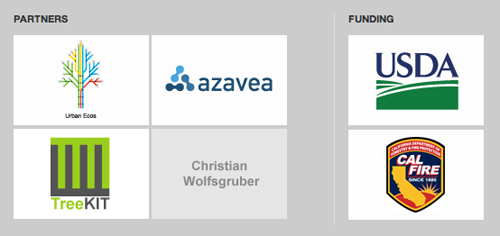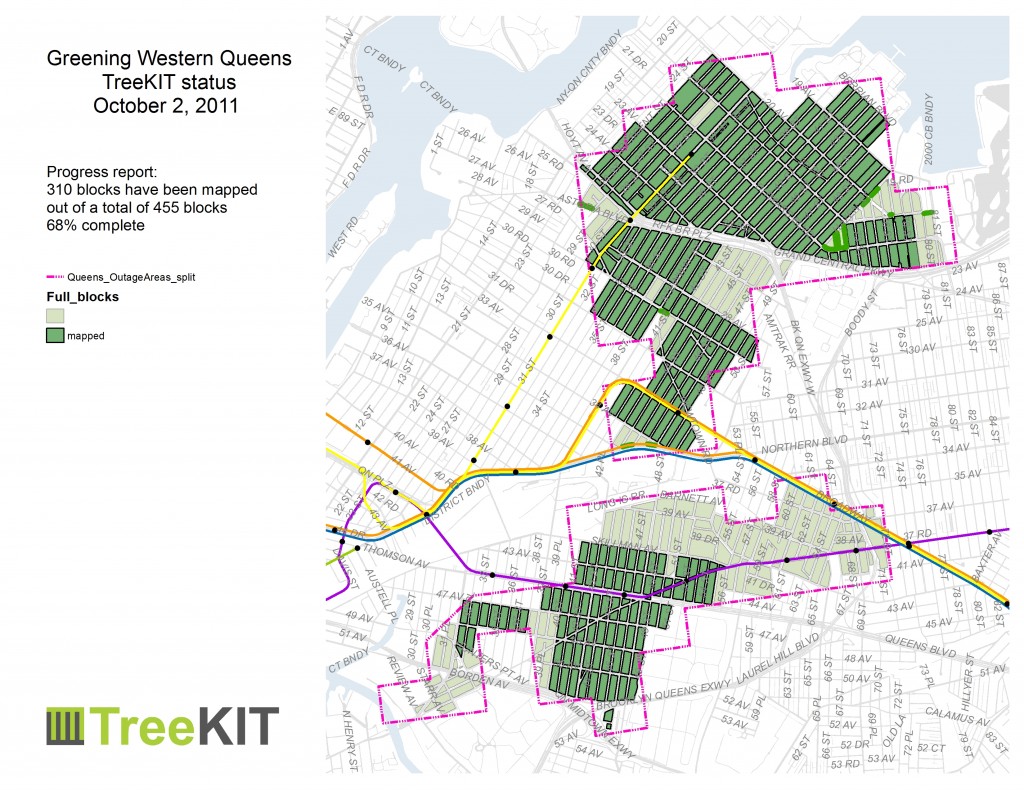April 28th and 29th were our first mapping outings of the season. Starting on a chilly Saturday in Astoria Queens we finishing up a few far-flung streets that were not completed last autumn. It was with a sense of satisfaction that we were able to complete the mapping of this neighborhood, one of the liveliest and most culturally diverse in the world. The range of languages spoken in this part of Queens is the highest of any neighborhood in New York City, numbering over 200 in the last Census.
As we always do when mapping, we say hello to folks whom we encounter on the sidewalks as we and our keen volunteers are taking measurements of the pits, running our measuring wheels on the curbs and then hugging the trees with tailor’s tapes to get the caliper of the trunk. Often people ask us what we are doing and take an interest or make a point of showing their children what we are up to.
One of the many aspects of TreeKIT that excite our volunteer corps and keep them coming back year after year is our focus on tree identification. Those keen to branch out beyond common names will often begin to learn the botanical Latin names of trees we map by referring to the NYCDPR Street Tree Identification sheet and it’s system of Latin name abbreviations. This always sparks a conversation about Latin roots and meanings, and what an elegant and logical system of nomenclature it continues to be.
We were thrilled to map many new trees planted in new pits and mostly with Million Trees tags. However, on several Million Trees tags we saw trees labeled with cultivar names developed by agribusinesses, and some tags had cultivar names only. A strong argument could be made to label trees with botanical Latin, especially given that Latin is certainly a more commonly understood language in such a culturally diverse neighborhood. The point of a tree-tag is to identify the tree, but when it’s a cultivar (brand) name and not a scientific name, it weakens the educational aspect of a civic tree-tagging program and smacks of corporate influence. We’d love to hear other’s thoughts on this topic.











